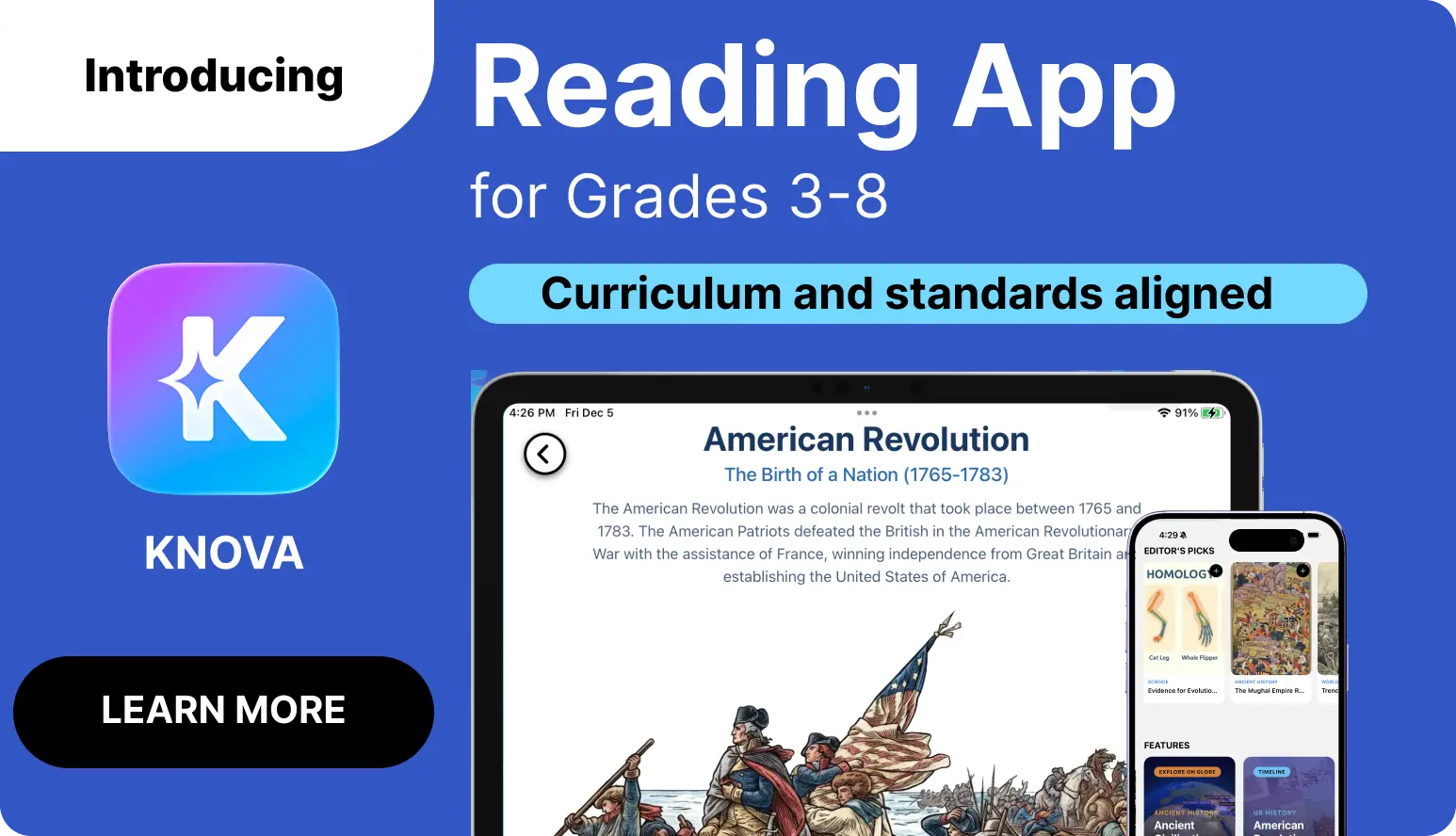Earth Day and Green Initiatives
Celebrate Earth Day with this fun and educational activity! Students will begin by reading a short passage that explains...
RI.4.1RI.4.2ESS3.CESS3.A
How Kids Can Help Protect the Great Barrier Reef
This passage focuses on empowering children to take action in protecting the Great Barrier Reef and the environment. It ...
RI.3.2RI.4.2
Efforts to Save the Great Barrier Reef
This passage outlines various efforts to protect and preserve the Great Barrier Reef in the face of climate change. It d...
RI.3.8RI.4.8
What is renewable energy?
This passage introduces the concept of renewable energy to children, describing it as energy from sources that don't run...
RI.3.1RI.4.14.4-ESS3
Can you give an example of a renewable energy source?
This passage focuses on solar energy as an example of renewable energy for children. It explains how solar panels captur...
RI.3.1RI.4.14.4-ESS3
Reduce Your Carbon Footprint: Simple Tips for Home
This passage focuses on reducing carbon footprints at home by conserving electricity. It suggests practical actions like...
RI.3.1RI.4.14.ESS2.D4-ESS3
How using less plastic helps the environment?
This passage explains to children how reducing plastic use helps the environment. It outlines the life cycle of plastic,...
RI.3.1RI.4.14.ESS2.D4-ESS3
What is recycling, and why is it important?
This passage introduces the concept of recycling to children. It explains recycling as the process of turning used mater...
RI.3.1RI.4.14.ESS2.D4-ESS3
How Kids Can Help Fight Climate Change?
This passage introduces the concept of 'reduce, reuse, recycle' as a way for children to help fight climate change. It e...
RI.3.1RI.4.14.ESS2.D4-ESS3
Ms. Park’s Garden Cleaners
This passage introduces ESS3.C concepts through practical garden activities. Students learn how daily choices impact the...
ESS3-CRL.1.1
Jin’s Clean-Up Crew
This passage addresses ESS3.C by demonstrating how children can make positive environmental choices. Through a park clea...
ESS3-CRL.1.1
Hurricane Ready
This passage explores how coastal communities use weather forecasts to prepare for hurricanes. Students learn about earl...
Snow Storm Safety
This passage demonstrates how communities in snowy regions prepare for winter storms. Students learn about blizzard warn...
Saving Energy
This passage demonstrates how daily choices affect the environment. Students learn about simple actions that help conser...
Less Waste Day
This passage explores how students can make environmentally conscious choices at school. Students learn about waste redu...
Storm Safety Plan
This passage demonstrates the engineering design process through storm safety preparation. Students learn how asking que...
Farm Machines
This passage explores how agricultural technology aids food production. Students learn how machines make farming more ef...
Building Tools
This passage demonstrates how construction technology aids building projects. Students learn how different tools help wo...
Medical Helpers
This passage explores how medical technology helps healthcare providers. Students learn how various machines and tools h...
The U.S. Wilderness Act of 1964
The U.S. Wilderness Act of 1964 protects over 100 million acres of wilderness, preserving biodiversity and providing rec...
7.RI.7.2
The History and Origins of the Precautionary Principle in Germany
The Precautionary Principle originated in Germany in the 1970s to address air pollution and forest damage. It emphasizes...
7.RI.7.3
Renewable Energy and Sustainability
Renewable energy, such as solar and wind power, is crucial for reducing reliance on fossil fuels and combating climate c...
Renewable Resources: Energy for Our Future
This informative reading passage introduces elementary students to renewable resources and sustainable energy options. W...
Wind-Powered Trains In the Netherlands
The Netherlands is the first country to run all its electric trains on 100% wind power, thanks to wind farms on land and...
7.RI.7.1
Wind-Powered Skyscrapers in Bahrain
Skyscrapers in cities like Bahrain and New York are using wind turbines to generate clean energy. The Bahrain World Trad...
7.RI.7.3
The Precautionary Principle
The Precautionary Principle is a decision-making guideline that suggests avoiding actions or policies that could harm pe...
Certification of Sustainable Forestry Practices
Certification of sustainable forestry practices ensures responsible forest management by protecting biodiversity, reduci...
7.RI.7.3
Protecting Water Sources
Aligned with NGSS K-ESS3-3, this activity guides students to learn about water conservation and pollution prevention. In...
Ways to Keep the Air Clean
Aligned with NGSS K-ESS3-3, this kindergarten activity teaches students about actions that can improve air quality. In '...
Caring for Local Wildlife
This activity aligns with NGSS K-ESS3-3, introducing kindergarteners to ways to care for local wildlife. In 'Caring for ...
What People Do to Stay Safe in Severe Weather
This activity aligns with NGSS K-ESS3-2, guiding kindergarteners in understanding how people prepare for severe weather....
Preparing for Different Types of Weather
Aligned with NGSS K-ESS3-2, this kindergarten activity focuses on how people prepare for various weather types. In 'Prep...
Safety Solutions Word Sort
This classification activity helps students understand different approaches to disaster safety. Students categorize vari...
4-ESS3-2
Flood Prevention Designs
This activity focuses on identifying design solutions that mitigate the impacts of flooding. Students categorize terms l...
Hurricane Impact Solutions
This activity introduces students to solutions that reduce the impacts of hurricanes. Students categorize terms like sto...








































